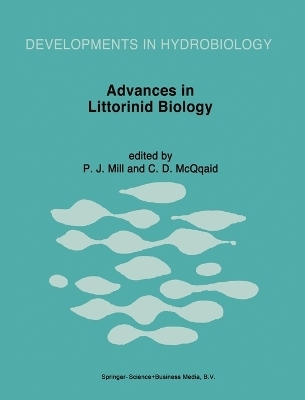
Advances in Littorinid Biology
Kluwer Academic Publishers (Verlag)
978-0-7923-3733-1 (ISBN)
Members of the gastropod family Littorinidae are common throughout the world. They form a very abundant component of many intertidal and shallow subtidal ecosystems and, by their grazing, often play a central role in shaping these communities. They also display a wide range of life history strategies and many are polymorphic, making them attractive model organisms for ecologists, evolutionary biologists and physiologists alike. Areas of particular interest include ecological interactions with other animals and with algae, the effects of pollutants and the use of littorinids as sentinel species for monitoring pollution, the effects of parasites on growth and ecology, taxonomy, and the study of genotypic/phenotypic responses to environmental factors. There is still much to be done, and the Littorinids are proving to be an ideal group on which to work. The text is primarily targeted at the research level, but should also provide useful information for advanced first-degree students conducting research projects.
1. Resource allocation, demography and the radiation life histories in rough periwinkles (Gastropoda); R.N. Hughes. 2. TBT effects on female genital system of Littorina littorea: a possible indicator of tributyltin pollution; B. Bauer, et al. 3. Comparison of imposex response in three Prosobranch species; M. Huet, et al. 4. Validation of a planimetric procedure to quantify stress in Littorina littorea (Gastropoda: Mollusca): is it independent of the reproductive cycle?; G. Calvo-Ugarteburu, et al. 5. Fine structure of the cephalic sensory organ in veliger larvae of Littorina littorea (L.) (Mesogastropoda, Littorinidae); D. Uthe. 6. Egg capsule morphology of five Hong Kong rocky shore littorinids; Y.M. Mat. 7. Shape variation in the rough periwinkle Littorina saxatilis on the west and south coasts of Britain; P.J. Mill, J. Grahame. 8. Microgeographical variation in shell strength in the flat periwinkles Littorina obtusata and L. mariae; C.R. Fletcher. 9. Lack of metabolic temperature compensation in the intertidal gastropods, Littorina saxatilis and L. obtusata; R.F. MacMahon, et al. 10. Effects of ambient temperature acclimation on nitrogen excretion and differential catabolism of protein and non-protein resources in the intertidal snails, Littorina saxatilis (Olivi) and L.obtusata (L.); D.W. Aldridge, et al. 11. Environmentally induced variation in uric acid concentration and xanthine dehydrogenase activity in Littorina saxatilis (Olivi) and L. arcana Hannaford Ellis; D.C. Smith, et al. 12. Crystalline calcium in littorinid mucus trails; M.S. Davies, S.J. Hutchinson. 13. Allozyme comparisons of four littorinid species morphologically similar to Littorina sitkama; N.I. Zaslavskaya. 14. The relationship between position on shore and shell ornamentation in two size-dependent morphotypes of Littorina striata, with an estimate of evaporative water loss in these morphotypes and in Melaraphe neritoides; J.C. Britton. 15. Maintenance of zonation patterns in two species of flat periwinkle, Littorina obtusata and L. mariae; G.A. Williams. 16. Seasonal migration promoting assortative mating in Littorina brevicula on a boulder shore in Japan; Y. Takada. 17. Extreme morphological diversity between populations of Littorina obtusata (L.) from Iceland and the UK; R.I. Lewis, G.A. Williams. 18. Frequency- and density-dependent sexual selection in natural populations of Galician Littorina saxatilis (Olivi); E. Rolan-Alvarez, et al. 19. Dispersal and population expansion in a direct developing marine snail (Littorina saxatilis) following a severe population bottleneck; K. Johannesson, B. Johanneson. 20. A geographically-based study of shell shape in small rough periwinkles; K.J. Caley, et al.
| Erscheint lt. Verlag | 30.11.1995 |
|---|---|
| Reihe/Serie | Developments in Hydrobiology ; v. 111 |
| Zusatzinfo | Illustrations, maps |
| Sprache | englisch |
| Einbandart | gebunden |
| Themenwelt | Naturwissenschaften ► Biologie ► Limnologie / Meeresbiologie |
| Naturwissenschaften ► Biologie ► Zoologie | |
| ISBN-10 | 0-7923-3733-6 / 0792337336 |
| ISBN-13 | 978-0-7923-3733-1 / 9780792337331 |
| Zustand | Neuware |
| Haben Sie eine Frage zum Produkt? |
aus dem Bereich


